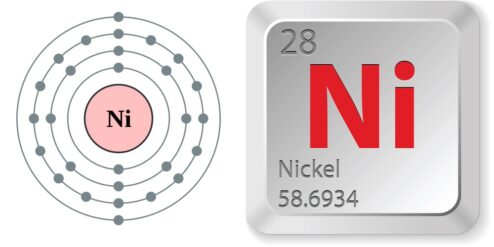Nickel is a naturally occurring element that is found in various food products. It is essential in small amounts for the human body, but excessive intake can lead to health issues. One food product that has been questioned for its nickel content is oatmeal. This article aims to delve into the topic, exploring the connection between oatmeal and nickel, scientific research on the subject, potential health implications, and ways to minimize nickel intake from oatmeal.
Understanding Nickel in Food Products
Nickel is a trace element that is present in the soil and water, and as a result, it is absorbed by plants and makes its way into our food chain. While it is not considered an essential nutrient for humans, it is required in minute amounts for the proper functioning of certain enzymes in the body. However, excessive intake of nickel can lead to a condition known as systemic nickel allergy syndrome (SNAS), characterized by skin rashes and gastrointestinal problems. Nickel content in food can vary significantly depending on the soil and water where the food is grown.
The Connection Between Oatmeal and Nickel
Oatmeal, being a plant-based food, naturally absorbs nickel from the soil and water where the oats are grown. The actual amount of nickel in oatmeal can vary widely depending on the geographic location and farming practices. Some studies have found that oatmeal can contain higher levels of nickel compared to other grains. This is because oats have a higher capacity to absorb nickel from the environment compared to other cereal crops. However, it’s important to note that the nickel content in oatmeal is still within safe limits for most people.
Scientific Research on Nickel Content in Oatmeal
There have been several scientific studies conducted to determine the nickel content in oatmeal. A study published in the Journal of Food Composition and Analysis found that oatmeal had a higher nickel content compared to other grains such as wheat and rice. Another study published in the Journal of Agricultural and Food Chemistry found that the nickel content in oatmeal varied depending on the type of oats and the processing methods used. Despite the higher nickel content, the levels found in these studies were still within the safe limits set by the World Health Organization.
Potential Health Implications of Nickel in Oatmeal
While the nickel content in oatmeal is generally safe for most people, individuals with a nickel allergy or sensitivity may experience adverse reactions. Symptoms can include skin rashes, itching, redness, and gastrointestinal problems such as bloating, nausea, and diarrhea. Long-term exposure to high levels of nickel can also lead to more serious health issues such as lung infections, heart disorders, and even cancer. However, it’s important to note that these health risks are associated with excessive intake of nickel, not the normal consumption of foods like oatmeal.
How to Minimize Nickel Intake from Oatmeal
If you are concerned about the nickel content in oatmeal, there are several steps you can take to minimize your intake. First, choose organic oats as they are typically grown in soils with lower levels of nickel. Second, rinse your oats thoroughly before cooking to remove any surface nickel. Third, avoid consuming oatmeal with other high-nickel foods to prevent excessive intake. Lastly, if you have a known nickel allergy, consult with a healthcare professional for personalized advice.
Other Food Sources High in Nickel to Be Aware Of
Apart from oatmeal, there are several other food sources that are high in nickel. These include legumes such as lentils, beans, and peas, whole grains, nuts and seeds, chocolate, and certain types of fish and shellfish. Also, canned foods and foods cooked in nickel-plated utensils can have higher levels of nickel. It’s important to maintain a balanced diet and not to eliminate these foods entirely, as they also provide other essential nutrients.
While oatmeal does contain nickel, the levels are generally within safe limits for most people. However, individuals with a nickel allergy or sensitivity should be cautious and may need to limit their intake. By choosing organic oats, rinsing them thoroughly before cooking, and avoiding excessive intake of other high-nickel foods, it is possible to minimize nickel intake from oatmeal.
Per approfondire:
- Journal of Food Composition and Analysis: This study provides detailed information on the nickel content in various grains, including oatmeal.
- Journal of Agricultural and Food Chemistry: This research paper discusses how the nickel content in oatmeal can vary depending on the type of oats and processing methods.
- World Health Organization: The WHO provides guidelines on safe limits for nickel intake.
- American Academy of Allergy, Asthma & Immunology: This professional organization provides resources on nickel allergy and how to manage it.
- USDA National Nutrient Database: This database provides comprehensive information on the nutrient content of various foods, including their nickel content.


